Since this painting became part of the collections of the prestigious Musée d'Orsay in Paris in 2010, it has become one of the most remarkable examples of macabre romanticism. Lovers of Gothic and Dark Fantasy are jostling for a chance to admire it.
But why is this painting so fascinating?
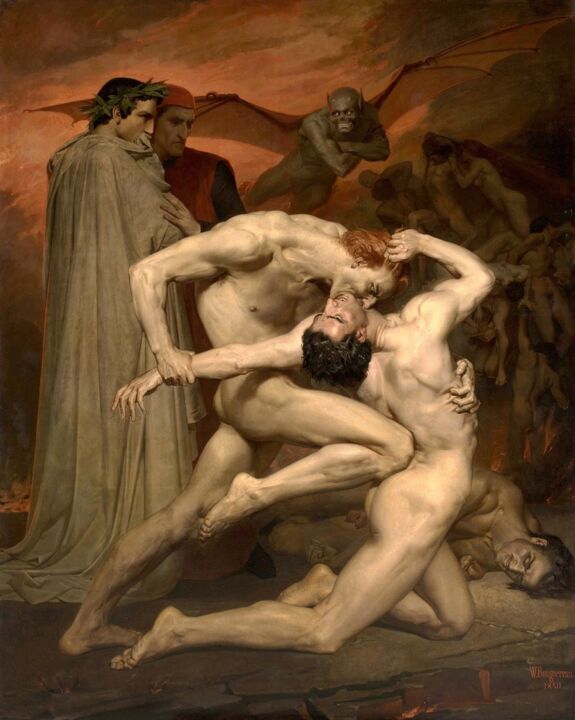
William Bouguereau, Dante and Virgil, 1850. Musée d'Orsay, Paris.
On this monumental canvas, we contemplate a naked man, who plants his sharp teeth and his muscular jaw in the neck of another, contorted with pain under the power of his executioner. In the background of the scene, two characters contemplate this struggle. A grimacing corpse lies on the ground to the right of this astonishing altercation, while a winged devil smiles as he watches the atrocious spectacle.
1. A bit of background: Who are Dante and Virgil?
Dante and Virgil are two characters who really existed, but who never crossed paths in real life, as they are separated by more than 13 centuries. The artwork is an allegory from the story of the Divine Comedy. This poem, written by Dante Alighieri in the early 14th century (between 1303 and 1321), is considered a masterpiece of Western literature. It describes a journey to the borders of the three super-terrestrial realms that are Hell, Purgatory and Paradise. Each of these stages contains 33 cantos, and an introductory canto brings the total of the piece up to 100 cantos.
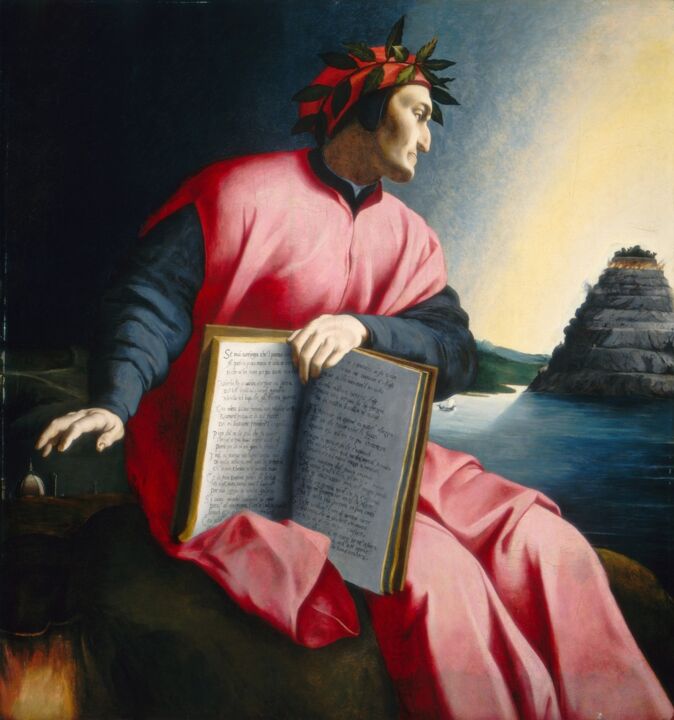 Agnolo Bronzino (attribued to), Allegorical Portrait of Dante, c. 1530. National Gallery of Art Washington.
Agnolo Bronzino (attribued to), Allegorical Portrait of Dante, c. 1530. National Gallery of Art Washington.
To avoid going into the details of this immense literary work, here is a short summary:
Dante, who plays himself in the story, is guilty of a sin of lust and ends up in Hell. There, he meets the soul of the poet Virgil, a famous writer who really existed during the Roman Republic, around 50 BC. Virgil offers to accompany him through Hell and Purgatory, so that he can reach Paradise and avoid the many obstacles and fearsome creatures that will slip in his path.
The two companions cross together the 9 circles of Hell, each one being dedicated to a particular sin. Through this dark journey, Dante and Virgil will discover more or less famous protagonists - sometimes real, sometimes fictional.
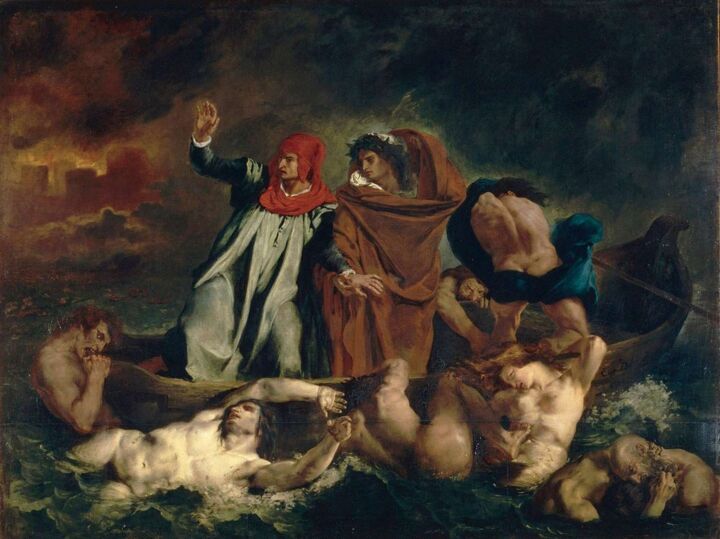
Eugène Delacroix, The Barque of Dante, 1822. Musée du Louvre, Paris.
For example, in the limbo from Hell to Purgatory, the two friends meet successively :
Characters from Greek mythology: Achilles, Ariadne, the Harpies, the centaur Nessos, Orpheus, Ulysses, Jupiter, Medusa, the Minotaur…
Famous Greek mathematicians and philosophers in their time: Thales, Socrates, Plato, Hippocrates, Aristotle…
Political personalities and kings from different regions of the world: Attila the Hun, Charlemagne, Julius Caesar, Cleopatra, Henry III of England, Hannibal…
Real characters, famous for their curious and often dark life trajectories, such as Paolo Malatesta and Francesca Da Rimini, two lovers who couldn't live together (Francesca was married to Paolo's awful brother, who killed them both when he found out about their secret romance), or Ugolin, a tyrannical leader who was punished and locked up in a tower with his children, and whose legend says that he had to eat them to survive.
Many biblical characters : Abel, Abraham, Adam and Eve, Isaac, Jacob, Judah, Moses...
Or protagonists of Celtic mythology (Lancelot of the Lake, Guinevere), or Islamic theology (Mohammed).
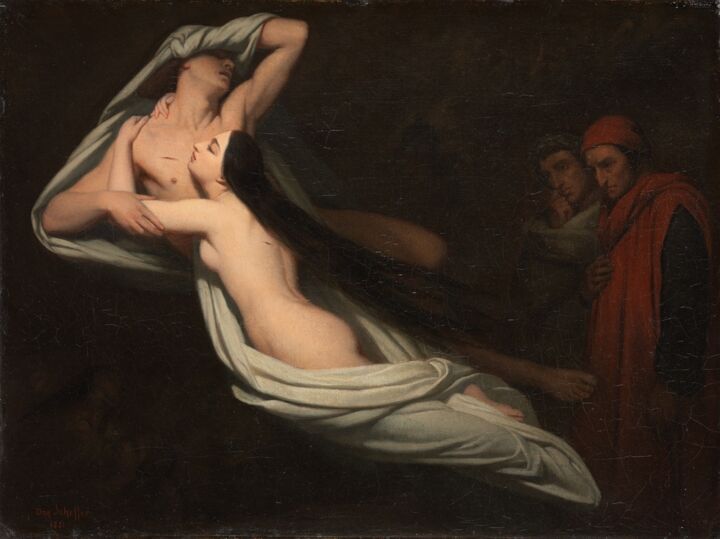
Ary Scheffer, Dante and Virgil Meeting the Shades of Francesca da Rimini and Paolo, 1851. Musée du Louvre.
Finally, Dante includes in his story many contemporary celebrities, Italian politicians and ecclesiastics. These insertions allow him to settle his accounts discreetly with the Florentine political world, transforming his work into an immense cross-over in which protagonists from different eras, regions and religions flourish.
Let us return to Bouguereau's painting now: In the background, on the left, the two perplexed and worried contemplators are Dante and Virgil, during their journey through one of the 9 circles of Hell. The two men they are watching are the Damned, those souls condemned to the punishments of Hell for life. In the myth created by Dante, these damned are prisoners of a sad fate: night and day, they have to fight, violently, in a universe filled with snakes, sharp rocks and a multitude of other sufferings.
Dante Alighieri's cantos are so detailed that they inspired many artists throughout the centuries, all trying to illustrate the strange scenes of this captivating epic. Botticelli, Auguste Rodin, Hippolyte Flandrin, Gustave Doré or the illustrious Eugène Delacroix have put their brushes and talents at the service of this Christian myth.
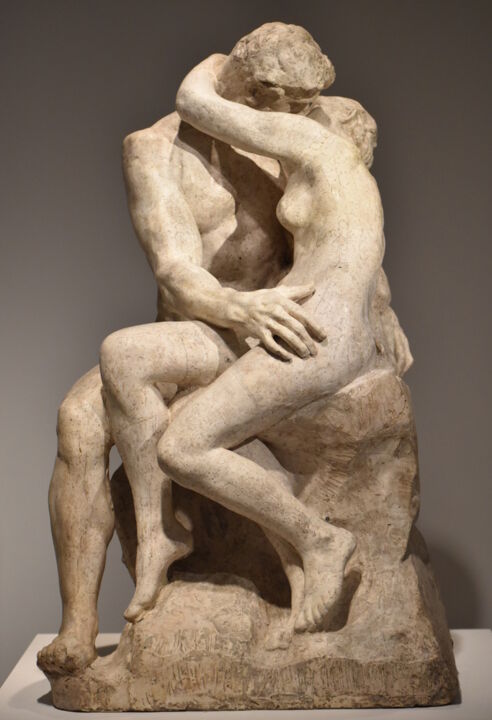
Auguste Rodin, The Kiss (Paolo Malatesta and Francesca Da Rimini), 1882. Musée Rodin, Paris.
2. Why choose such a particular theme?
William Bouguereau is an academician. His artworks were validated by the artistic community and his studio was flooded with bourgeois and royal commissions. During his career, the French artist produced mostly portraits and life scenes of little interest.
However, when he conceived this piece, Bouguereau was only 25 years old: he had to make a mark, and for that, nothing better than a bold subject. At the time, the only way to become famous was to obtain a critical success at the Salon Officiel (the one and only annual exhibition allowing French artists to show their work): he had to be careful with his proposals.
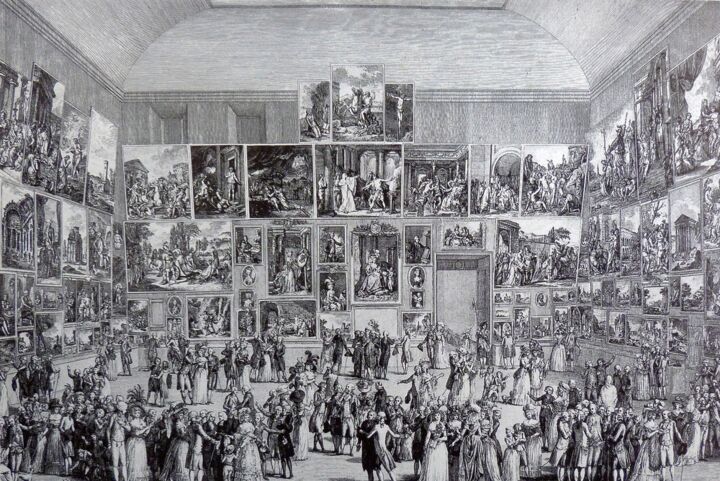
Pietro Antonio Martini, The Official Salon of 1787. Paris, Bibliothèque Nationale.
In this painting, the painter doesn't skimp on effects and artifices, even if it means making the composition outrageously dramatic. Although the musculature of these two brutes is deformed and doesn't correspond to an anatomical reality, the rendering of the flesh and hair is strikingly true. Bouguereau was refused several times at the Salon. But now, time for revenge has come: the critical reception of this work was phenomenal. The painter became the star of the Salon and he soon obtained the Holy Grail for a 19th century artist: an abundance of royal and bourgeois commissions.
3. Bouguereau: a polished artist, victim of modernity
During his lifetime, William Bouguereau was highly acclaimed by the artistic establishment and wealthy collectors. His studio was running at full speed, and the master even complained that he no longer had time to go to the toilet without losing money.
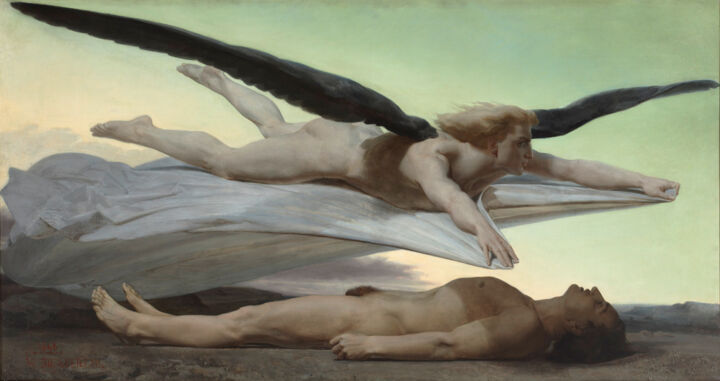
William Bouguereau, Equality Before Death, 1848. Musée d'Orsay, Paris.
Yet today, this artist remains much less famous throughout the world than his contemporaries Claude Monet, Paul Cézanne, Auguste Renoir or Edgar Degas.
The reason for such an imbalance?
It's the emergence of modernity, embodied by impressionism, which will quickly make the pure and hard academicism defended by William Bouguereau, Alexandre Cabanel or the Flandrin brothers obsolete.
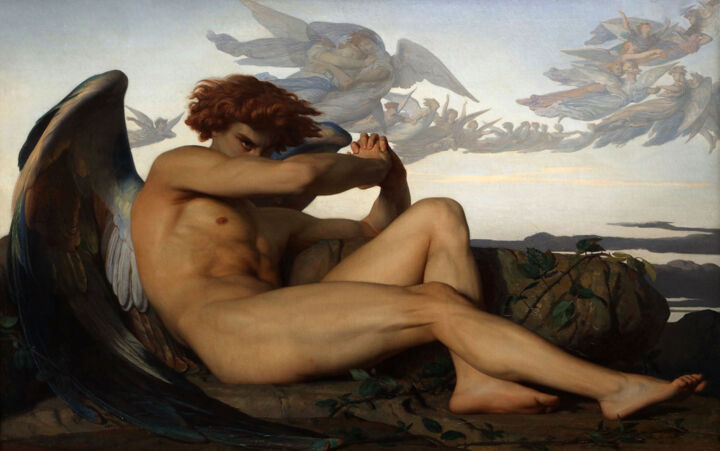
Alexandre Cabanel, Fallen Angel, 1847. Musée Fabre, Montpellier (France).
Did you know that?
The Impressionists hated Bouguereau, who represented for them the illustration of academic success and artistic ease. For Émile Zola, a great defender of the modern cause, Bouguereau is "the height of the dappled, of glossy elegance". Paul Cézanne even went so far as to pronounce these terrible words: "Now, fuck Bouguereau!". All reproach him for being too slick, too honeyed or too sweet. They accuse him of being distant from the reality of the world, of participating in this artistic masquerade which slows down the emergence of a real modernity.
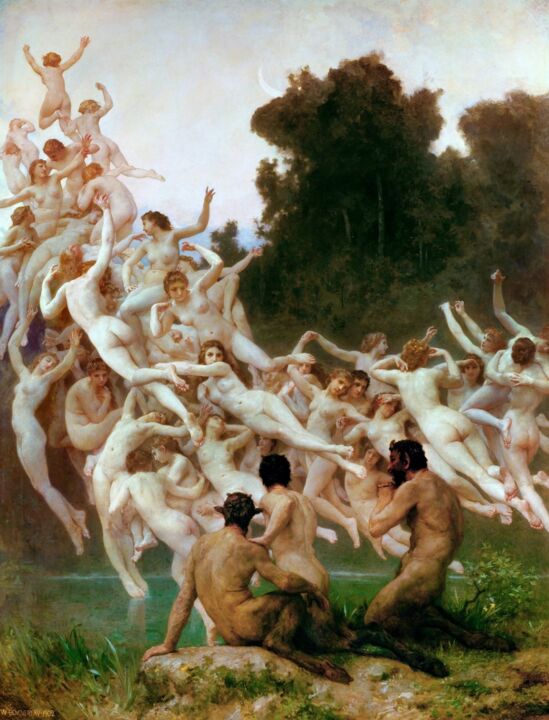
William Bouguereau, The Oreads, 1902. Musée d'Orsay, Paris.
It took more than a century for Bouguereau's vast and multiple paintings to be rediscovered. In 1980, a retrospective at the Petit Palais, followed by the publication of a catalog raisonné in the 2000s, allowed the public to enjoy many masterpieces unjustly forgotten by the clash of modernity.
Kitsch is dead, long live kitsch!

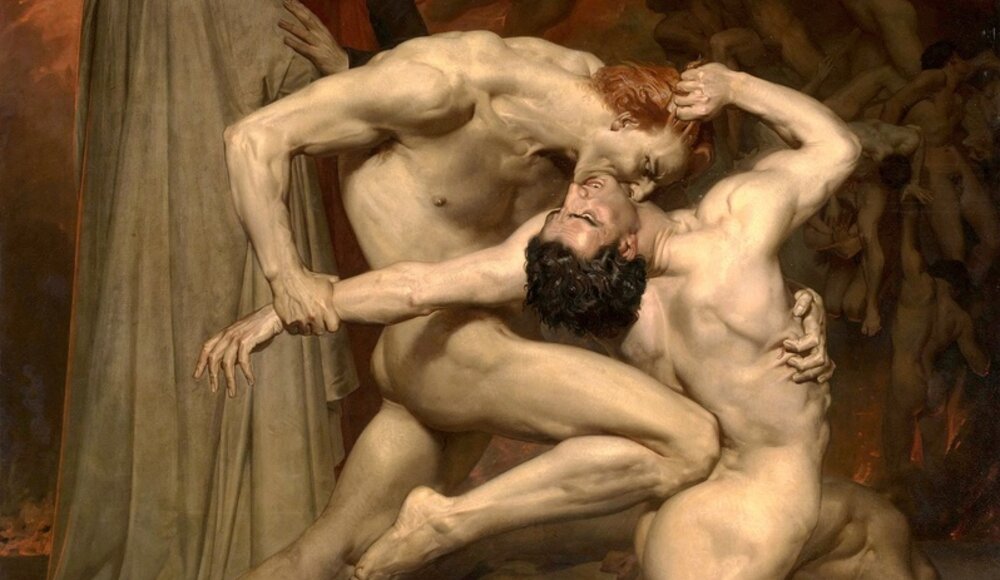
 Bastien Alleaume
Bastien Alleaume